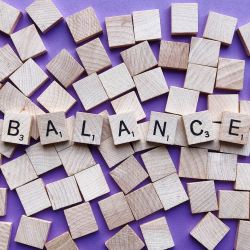Much has been written about Diversity, Equity, and Inclusion (DEI). Many who are adamant about diversity, especially in regulatory science, are less enthused over equity. I’ve had a few thoughts about both.
Equity
Let’s begin here because it is the easiest for me to address. Much of the angst over equity comes from its application, especially the idea that equity is achieved by lowering standards, whether admission or testing. Certainly, we have seen this in the number of high school graduates who are functionally illiterate.
“According to a study conducted in late April [in 2016] by the U.S. Department of Education and the National Institute of Literacy, 32 million adults in the U.S. can’t read. That’s 14 percent of the population. Twenty-one percent of adults in the U.S. read below a 5th-grade level, and 19 percent of high school graduates can’t read.”
But the real means of achieving equity lies in raising individuals up, being supportive, and filling the gaps in their education, training, or experience to allow them to meet the metrics. My medical school class, which was significantly “diverse” in terms of ethnicity, age, gender, and marital status for its time, provided tutoring to mitigate educational gaps – they didn’t lower standards for graduation.
Diversity
Equally contentious is the idea of diversity. Everyone is in favor of diversity as long as the diversity reflects their concerns. Consider the political Left, which strongly favors diversity as long as industry representatives and others with “conflicts of interest” are kept off panels offering scientific rationales for regulatory decisions. Or the political Right, strong advocates of First Amendment rights, except for when the speaker is using the lens of critical race theory.
I am reading Neil Theise's Notes on Complexity, which discusses complex systems like the human body and culture. He writes that complex systems are found everywhere and that there are general principles that help to define these systems. I wanted to share Rule #4.
“Rule #4. The Degree of Randomness Is Key. Unpredictability is a defining hallmark of complex systems. Unpredictability is also the source of all the extraordinary capacities...”
Thinking outside the box is an example of unpredictability. I would argue that diversity of thought spurs that unpredictability. He goes on to make an important point. Too much randomness promotes chaos. The immediate disregard for public health admonitions during COVID-19 and the belief that one’s autonomy was more important than collaboration in the face of an infectious threat is, to my mind, an example of too much randomness. But wait. Too little randomness “causes a system to behave more like a machine, without enough flexibility to find new modes of adaptive behaviors.” The guidance by our public health agencies on how best to counter COVID-19 is, to my mind, an example of too little randomness.
It is difficult in advance to identify the “Goldilocks” degree of randomness. Borrowing from physics, a complex system, Theise uses the term “quenched disorder,” where “With just the right, low level of randomness, … the system blooms with the ability to explore what Stuart Kauffman calls the ‘adjacent possible.’” [1]
It seems to me that, in scientific terms, is the true goal of DEI – to find the correct level of randomness to innovate and grow. As with many human behaviors, finding the Goldilocks quenched disorder may take a while. In some ways, we have gone too far; in others, not far enough. But that is about application, not intent. I think we should continue to follow the intention of DEI because that is what complex systems, like our culture, do to continue to thrive.
[1] The adjacent possible is another interesting concept, but for the sake of this moment, it represents possible other pathways. Continuing with the COVID-19 analogy would mean finding targeted public health measures rather than none or one-size-fits-all.

